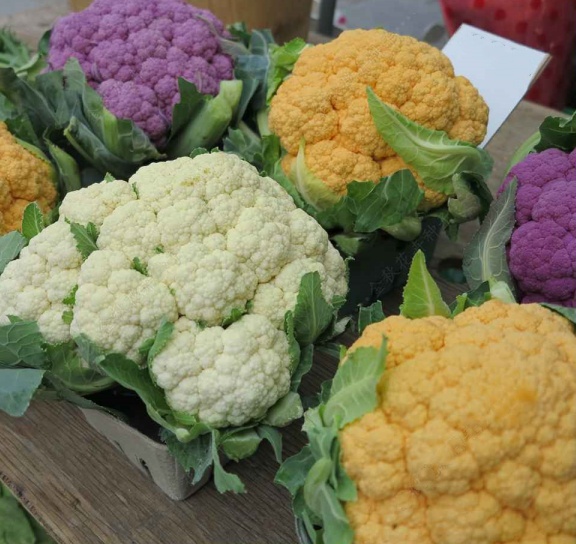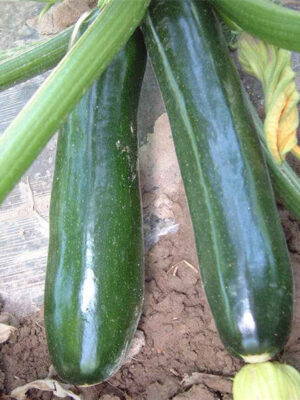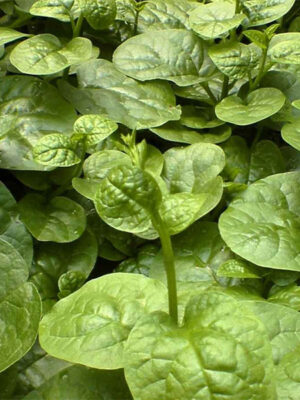Brassica oleracea var. botrytis L. seeds Cauliflower seeds organic broccoli seeds
Cauliflower Habits: medium-ripe varieties, including purple cauliflower seeds, yellow cauliflower seeds, light green cauliflower seeds, etc., which are selected from cauliflower. The mature cauliflower flower bulbs generally have a transverse diameter of 20-30 cm and a diameter of 10-20 cm. They are composed of a fat main axis and numerous fleshy pedicels. In addition to being cultivated as ordinary cauliflower for commercial sale, colored cauliflower can also be cultivated in pots for small family vegetable gardens or ornamental cultivation,and the prospects are promising.
Cauliflower purple broccoli seeds for sprouting Planting Guide:
In autumn and winter, romanesco cauliflower seedlings are cultivated in the open field under shade from July to August. The seedlings are 30-35 days old. They are planted in August-September and are put on the market from October to February of the following year. In the spring, seedlings are raised in hotbeds. The seedlings are about 60 days old. The curds are formed in April to May and are harvested before the high temperature arrives. For large-area cultivation, you can refer to ordinary cauliflower cultivation.
For ornamental cultivation, seeds can be sown in flower pots. Spring cauliflower seedlings have 5-6 leaves for planting, and autumn cauliflower seedlings have 4-5 leaves for planting. For ridge farming or border farming, it is not advisable to plant too early in spring. Severe frost can cause cauliflower to suffer freezing damage, and long low temperatures can cause the formation of small flower balls. Early-maturing varieties should be planted with a row spacing of 53-60 cm and a plant-to-plant spacing of 40-45 cm. Medium-ripening varieties have a row spacing of 60-70 cm and a plant-to-plant spacing of 45-50 cm. Late-maturing varieties have row spacing of 70-80 cm and plant-to-plant spacing of 50-60 cm. After planting, cultivate the soil and weed in time. In autumn, when the weather is hot, you should water in time. Boron deficiency in the soil will cause the center of the flower stem to crack, and in severe cases the curd will turn rusty. Use 0.1 grams of borax per square meter of soil as a base fertilizer. If it is not applied, use 0.2% boric acid solution to foliarly spray it during the expansion stage of the curd. Cauliflower is seriously infested with insect pests, so please refer to the control methods for ordinary white cauliflower.
For potted cauliflower, after survival, add 1-2 kg of decomposed dilute human feces, 3-5 g of superphosphate and 1-3 g of ammonium bicarbonate per pot. In the early stages of rosette leaves and flowering, apply 3-5 grams of urea or 5-10 grams of ternary compound fertilizer per pot. During the curd formation period, apply 1-2 kilograms of 1% potassium dihydrogen phosphate per pot. Water thoroughly every 1-2 days in spring, every day in summer, and every 2-3 days in autumn. Do a good job in building insulation in winter and shading and cooling in summer. Autumn cauliflower is sown late, and the bulbs are still very small when the severe frost arrives. You can transplant them into the greenhouse, and potted ones can be moved indoors. When the curd swells, use the old leaves below to cover the curd to keep it clean and prevent it from discoloring. When the weather gets cold, covering the curd with leaves can also prevent cold damage. You can cover it with more layers if necessary. Frostproof. Harvest in time when the curds are fully grown, the edges have not spread out, and the curds are tight.







评价
目前还没有评价